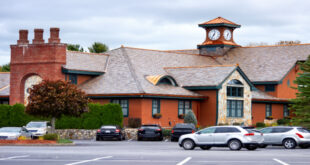Discover 7 innovative interior design trends inspired by FlyArchitecturenet inside the home. Learn how to transform your home with modern, sustainable, and tech-savvy solutions.
Introduction
Innovative interior design is more than a trend—it’s a lifestyle that transforms a house into a dynamic, functional, and beautiful home. Today’s homeowners are seeking spaces that balance modern technology, sustainability, and personalized style while reflecting the cultural nuances of their lifestyle. This article explores the FlyArchitecturenet approach to “inside the home” design, outlining key trends, practical strategies, and future innovations that help create spaces that are both aesthetically pleasing and incredibly functional.
As urban living continues to evolve, homeowners are increasingly drawn to designs that are both forward-thinking and rooted in a respect for heritage. FlyArchitecturenet’s philosophy combines the best of modern design with thoughtful planning to create interiors that are inviting, efficient, and visually engaging. Let’s dive into the FlyArchitecturenet vision and learn how you can transform your living space
Table of Contents
1. FlyArchitecturenet inside the home and vision: Merging Innovation with Comfort
FlyArchitecturenet is a unique platform dedicated to exploring the intersection of architecture and interior design. Their approach goes beyond merely following trends—it emphasizes innovation in every facet of home design. At the core of their philosophy is the belief that the interior of a home should be a living space that adapts to the changing needs of its occupants while remaining timeless in style.
Key Pillars of the FlyArchitecturenet Philosophy
- Innovation and Technology: Embracing smart home systems and high-tech integrations that simplify everyday living.
- Sustainability: Using eco-friendly materials and energy-efficient solutions to reduce environmental impact.
- Personalization: Crafting spaces that reflect the personality and lifestyle of the homeowner.
- Functionality: Designing interiors that are as practical as they are beautiful, ensuring each space serves a purpose.
- Cultural Sensitivity: Respecting traditional design elements while blending them with modern aesthetics.
This blend of innovation and tradition ensures that every project resonates with modern sensibilities while honoring timeless design principles.
2. Top Trends in Modern Interior Design Inspired by FlyArchitecturenet
Home interiors are evolving rapidly as homeowners seek spaces that offer both comfort and innovation. Here are seven key trends that FlyArchitecturenet is championing:
Trend 1: Smart Home Integration
Technology is now seamlessly woven into home design. Smart thermostats, lighting systems, and security systems are being integrated to provide comfort and efficiency. In a FlyArchitecturenet-inspired home, these systems work harmoniously to create an environment that adjusts automatically to your preferences.
Key Features:
- Voice-activated assistants: Control lighting, temperature, and multimedia with simple voice commands.
- Automated climate control: Ensure comfort with sensors that adjust indoor temperatures based on occupancy and weather changes.
- Smart security: Integrated systems that protect your home while allowing remote monitoring and access.
Trend 2: Sustainable and Eco-Friendly Materials
Sustainability is no longer a niche concern—it’s at the heart of modern design. Homeowners are increasingly prioritizing materials that are renewable, recycled, and low-impact. FlyArchitecturenet advocates for sustainable solutions that do not compromise style.
Sustainable Elements:
- Reclaimed wood and recycled metals: These materials add a warm, natural touch to interiors.
- Low-VOC paints and finishes: Ensuring healthy indoor air quality.
- Energy-efficient appliances and fixtures: Lowering utility costs and reducing your environmental footprint.
Trend 3: Multi-Functional Spaces
With urban living spaces becoming smaller, every square foot must work double duty. Today’s homes are designed to adapt, offering multi-functional rooms that can serve as both workspaces and living spaces.
Design Strategies:
- Convertible furniture: Items like fold-out desks or sleeper sofas provide versatility.
- Open-plan layouts: Encourage fluid movement and multiple uses for a single area.
- Zoning with screens and partitions: Clearly define spaces without sacrificing openness.
Trend 4: Minimalist Aesthetics with a Touch of Luxury
Modern interiors often embrace minimalism, but with an added layer of refined luxury. FlyArchitecturenet’s approach uses clean lines and uncluttered spaces while incorporating rich textures and premium finishes to elevate the look.
Essential Elements:
- Neutral palettes with accent colors: Soft tones accented with bolder, luxurious hues.
- High-quality materials: From polished stone to sumptuous fabrics that exude understated elegance.
- Thoughtful lighting: Layered lighting that creates ambiance without overwhelming the space.
Trend 5: Integration of Natural Elements
Bringing the outdoors inside has become a defining feature of modern design. Natural light, greenery, and organic textures play a critical role in creating a calm and welcoming environment.
Ideas for Natural Integration:
- Indoor gardens and green walls: Add vitality and freshness to your home.
- Large windows and skylights: Maximize daylight while offering views of nature.
- Natural materials: Stone, wood, and bamboo introduce a tactile connection to the environment.
Trend 6: Customized and Artistic Detailing
The trend towards personalization means that homes increasingly become a canvas for artistic expression. Whether through bespoke furniture, custom murals, or handcrafted decorative elements, every detail can tell a story.
Personalization Tips:
- Handmade accents: Incorporate artisan-crafted items that add a unique flair.
- Custom lighting fixtures: Use artistic designs that reflect your personal taste.
- Curated collections: Display art and memorabilia that mirror your heritage and interests.
Trend 7: Blending Cultural Heritage with Modern Functionality
Modern design need not discard tradition. Many homeowners now aim to celebrate their cultural heritage within a contemporary context. FlyArchitecturenet’s vision includes blending classic elements with modern design techniques.
Ways to Celebrate Heritage:
- Incorporate traditional patterns: Use textiles and art that reference historical motifs.
- Adaptive reuse of vintage elements: Repurpose antique furniture or architectural features in a new, modern setting.
- Culturally inspired color schemes: Draw inspiration from regional palettes that speak to your roots.
3. Achieving a FlyArchitecturenet-Inspired Home: Practical Tips
Transforming your home into a FlyArchitecturenet-inspired space may seem daunting, but a few practical steps can set you on the right path.
Start with a Clear Vision
Begin by defining what you want from your space:
- Assess your needs: Think about functionality—do you need a dedicated workspace, more open areas, or a multi-use room?
- Inspiration board: Collect images, color palettes, and materials that resonate with you. Platforms like Pinterest or design blogs can be great sources.
Plan Your Layout Strategically
Effective space planning is key to achieving both functionality and aesthetics.
- Use open-plan designs: Create a flow that feels natural and adaptable.
- Incorporate zoning: Use furniture, screens, or different flooring types to delineate areas without closing off spaces.
- Embrace multifunctionality: Choose pieces that can transform as needed, like extendable dining tables or modular storage units.
Integrate Technology Thoughtfully
Technology should blend in seamlessly with your interior.
- Smart hubs: Install a central control system that manages lighting, climate, and security.
- Concealed wiring: Keep your tech integrated with minimalist solutions so that cables and devices do not disrupt your design.
- Energy efficiency: Use LED lighting, smart thermostats, and eco-friendly appliances to save on energy without compromising design.
Choose Sustainable Materials
Eco-friendly design is both a style statement and a commitment to the planet.
- Opt for natural finishes: Reclaimed wood, bamboo, and recycled metal add an organic feel.
- Non-toxic coatings: Use low-VOC or natural paints and finishes to ensure a healthy home environment.
- Local sourcing: Whenever possible, source materials locally to reduce carbon footprint and support local businesses.
Emphasize Customization and Personal Touches
A personalized home reflects your unique taste and lifestyle.
- Bespoke furniture: Consider custom-built pieces that fit your space perfectly.
- Artistic detailing: Integrate artisanal items, from hand-painted tiles to customized lighting fixtures.
- Family heritage: Display heirlooms or artworks that celebrate your cultural background, blending tradition with modern design.
Incorporate Natural Elements
Connecting your indoor environment with the natural world enhances well-being.
- Maximize natural light: Install large https://en.wikipedia.org/windows and skylights to brighten your interior.
- Indoor plants: Use a mix of potted plants, vertical gardens, or even an indoor water feature to create a soothing atmosphere.
- Natural textures: Integrate stone, wood, and organic fabrics to evoke a sense of calm and connection to nature.
4. The Role of Technology: Creating a Smart, Connected Home
Modern homes are evolving into smart spaces that not only look stunning but also adapt to your lifestyle. With the rise of the Internet of Things (IoT), integrating technology into your home’s design is both practical and essential.
Smart Home Essentials
- Lighting: Utilize smart lighting systems that adjust based on time of day and occupancy. Dimmable LED lights, controlled via apps or voice assistants, can transform any room.
- Climate Control: Smart thermostats learn your schedule and preferences, adjusting heating and cooling automatically to optimize comfort and energy efficiency.
- Security: Advanced security systems, including smart locks and surveillance cameras, allow for remote monitoring and ensure the safety of your home.
- Entertainment: Integrated sound systems and hidden displays can enhance your living space without compromising aesthetics.
Design Strategies for a Connected Home
- Hidden tech: Incorporate technology in a way that maintains the minimalist look. For instance, use built-in speakers or discreet charging stations.
- Central control: A single smart hub can manage multiple functions, ensuring your home responds intuitively to your needs.
- Adaptable spaces: Design rooms that can transform from a work environment to a relaxation zone with the simple switch of a smart device.
Integrating technology in a harmonious way not only enhances convenience but also elevates your home’s design to meet the demands of modern living.
5. Sustainable Design: Eco-Friendly Practices for Modern Interiors
Sustainability is at the forefront of today’s design trends. A FlyArchitecturenet-inspired home not only looks good but also minimizes its environmental impact.
Key Elements of Sustainable Interiors
- Renewable Materials: Use recycled metals, reclaimed wood, and sustainably harvested bamboo to reduce environmental strain.
- Energy Efficiency: Integrate energy-efficient lighting, appliances, and smart climate control systems to reduce consumption.
- Water Conservation: Install fixtures that minimize water use and consider a rainwater harvesting system for irrigation.
- Indoor Air Quality: Choose non-toxic, low-VOC paints and finishes to ensure a healthy environment.
How to Achieve Sustainability in Your Home
- Conduct a Home Audit: Assess your home’s energy usage and identify areas for improvement.
- Prioritize Local: Source materials from local suppliers to support regional economies and reduce transportation emissions.
- Green Spaces: Incorporate indoor plants and natural elements that improve air quality and add to the aesthetic appeal.
- Innovative Insulation: Use modern insulation materials that reduce energy waste while maintaining comfort.
By focusing on sustainability, you not only create a healthier living environment but also contribute to a broader effort in combating climate change.
6. Future Trends: What’s Next in Home Architecture?
As technology and environmental considerations continue to evolve, the future of home design is full of exciting possibilities.
Emerging Innovations
- 3D Printing and Custom Fabrication: Rapid prototyping and 3D printing technology are revolutionizing how custom fixtures, furniture, and even architectural elements are produced.
- Biophilic Design 2.0: Future homes will increasingly integrate living systems—vertical gardens, green roofs, and natural water systems—to create a direct connection with nature.
- Augmented Reality (AR) in Design: AR applications will allow homeowners to visualize and customize design changes in real time, providing a seamless planning experience.
- Smart Materials: Innovations such as self-healing concrete, dynamic glass, and thermochromic surfaces will redefine sustainability and functionality in home interiors.
The Evolving Role of the Designer
In the future, interior designers and architects will serve as both creators and sustainability consultants. Their role will evolve to encompass not only aesthetic judgments but also data-driven decisions that ensure efficiency, functionality, and environmental harmony.
7. Frequently Asked Questions (FAQs)
Q1. What is FlyArchitecturenet and how does it influence home interiors?
A1. FlyArchitecturenet is a platform that explores innovative trends in architecture and interior design. It influences home interiors by championing smart technology, sustainable materials, and customizable, multi-functional spaces that reflect both modern and traditional aesthetics.
Q2. How can I integrate smart home technology without compromising on design?
A2. The key is to choose sleek, integrated devices—such as hidden speakers, smart lighting, and centralized control systems—that blend seamlessly into your décor. Focus on concealing wiring and using built-in solutions to maintain a minimalist look.
Q3. What sustainable practices can I adopt for my home interior?
A3. Start by using eco-friendly materials (like reclaimed wood and recycled metals), install energy-efficient appliances and lighting, and incorporate natural elements such as indoor plants. Additionally, consider local sourcing to reduce your environmental footprint.
Q4. How can I create a multi-functional space in a small home?
A4. Opt for open-plan designs, versatile furniture that adapts to different uses, and strategic zoning using screens or partitions. This allows a single room to serve multiple purposes while remaining cohesive.
Q5. Are there cultural elements that can be blended with modern design?
A5. Yes, integrating traditional patterns, textiles, or art pieces that reflect your heritage can create a rich, personalized environment. This fusion of modern and traditional is a hallmark of the FlyArchitecturenet approach.
Conclusion
FlyArchitecturenet’s approach to interior design inside the home is all about balance—melding modern technology, sustainable practices, and personalized aesthetics with a respect for traditional elements. Whether you’re rethinking your entire living space or simply looking for small, innovative tweaks, the trends and strategies outlined here offer a blueprint for creating a home that is as functional as it is beautiful.
By embracing smart technology, sustainable materials, and customizable designs, you can transform your home into a living space that meets your needs today and adapts to future challenges. Let your home be a testament to innovation, heritage, and personal style—a true reflection of modern living.
For more expert insights, design tips, and to discover additional resources, please visit Nexmove. You can also contact us for personalized advice and services tailored to your interior design needs
 NexMove Home & Investment Guide Find Your Perfect Property, Invest Wisely.
NexMove Home & Investment Guide Find Your Perfect Property, Invest Wisely.




